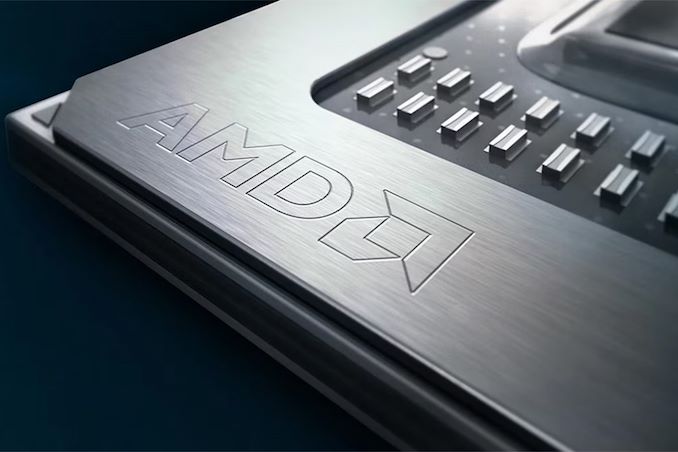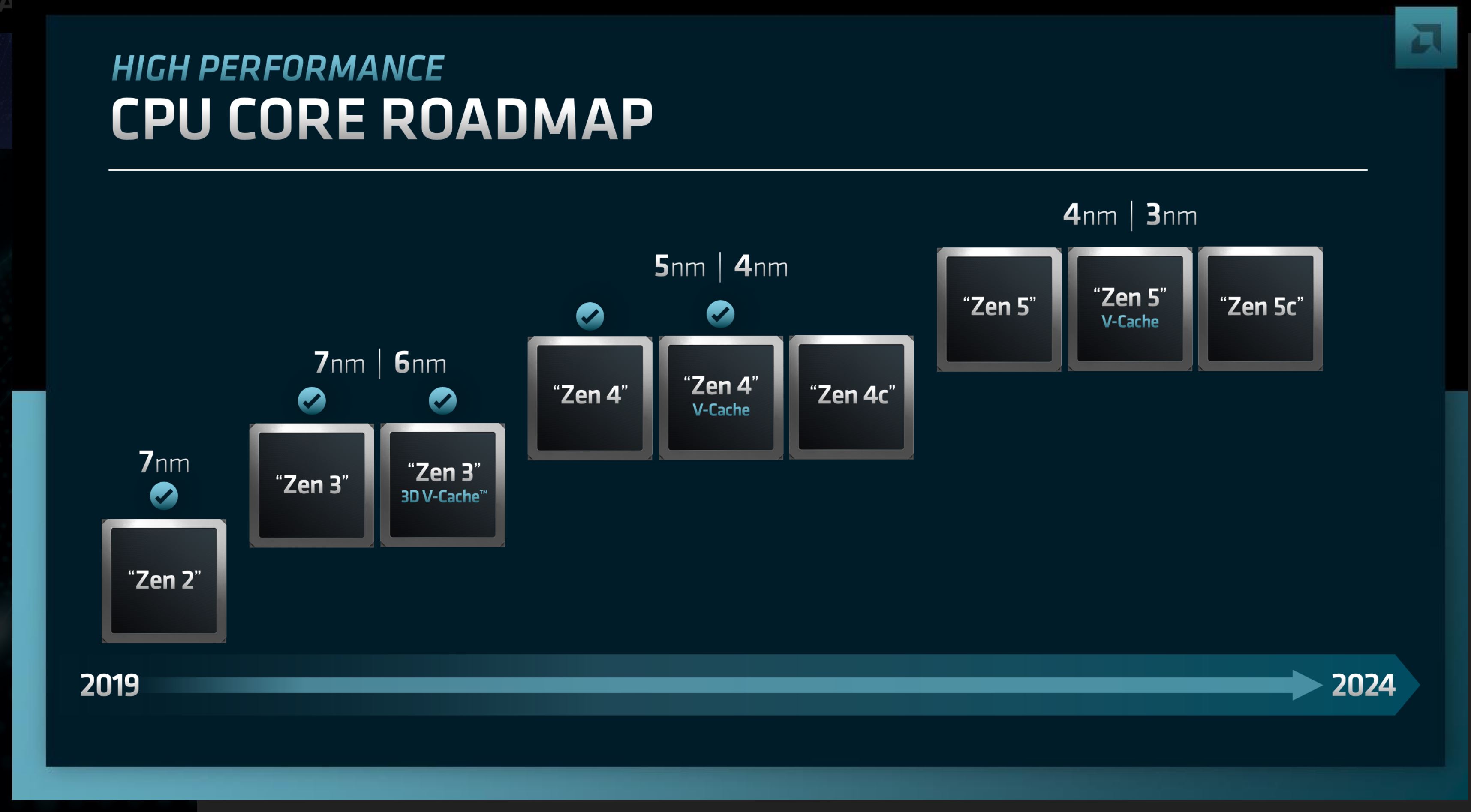AMD: Zen 5-Based CPUs for Client and Server Applications On-Track for 2024
by Anton Shilov on February 2, 2024 10:30 AM EST
As part of their quarterly earnings call this week, AMD re-emphasized that its Zen 5-architecture processors for both client and datacenter applications will be available this year. While the company is not making any new disclosured on products or providing a timeline beyond "later this year", the latest statement from AMD serves as a reiteration of AMD's plans, and confirmation that those plans are still on schedule.
So far, we have heard about three Zen 5-based products from AMD: the Strix Point accelerated processing units (APUs) for laptops (and perhaps eventually desktops), the Granite Ridge processors for enthusiast-grade desktops, and Turin CPUs for datacenters. During the conference call with analysts and investors, AMD's Lisa Su confirmed plans to launch Turin and Strix this year.
"Looking ahead, customer excitement for our upcoming Turin family of EPYC processors is very strong," said Lisa Su, chief executive officer of AMD, at the company's earnings call this week (via SeekingAlpha). "Turin is a drop-in replacement for existing 4th Generation EPYC platforms that extends our performance, efficiency and TCO leadership with the addition of our next-gen Zen 5 core, new memory expansion capabilities, and higher core counts."
The head of AMD also confirmed that Turin will be drop-in compatible with existing SP5 platforms (i.e., will come in an LGA 6096 package), feature more than 96 cores, and more memory expansion capabilities (i.e., enhanced support for CXL and perhaps support for innovative DIMMs). Meanwhile, the new CPUs will also offer higher per-core performance and higher performance efficiency.

AMD High Performance CPU Core Roadmap. From AMD Financial Analyst Day 2022
As far as Strix Point is concerned, Lisa Su confirmed that this is a Zen 5 part featuring an 'enhanced RDNA 3' graphics core (also known as Navi 3.5), and an updated neural processing unit.
"Strix combines our next-gen Zen 5 core with enhanced RDNA graphics and an updated Ryzen AI engine to significantly increase the performance, energy efficiency, and AI capabilities of PCs," Su said. "Customer momentum for Strix is strong with the first notebooks on track to launch later this year."
It's notable that the head of AMD did not mention Granite Ridge CPUs foe enthusiast-grade desktops during the conference call. Though as desktop CPUs tend to have smaller margins than mobile or server parts, they are often AMD's least interesting products to investors. Despite that omission, AMD has always launched their consumer desktop chips ahead of their server chips – in part due to the longer validation times required on the latter – so Turin being confirmed for 2024 is still a positive sign for Granite Ridge.
Source: AMD/SeekingAlpha










23 Comments
View All Comments
GeoffreyA - Friday, February 2, 2024 - link
It's going to be quite interesting to see the microarchitecture of Zen 5 and what they've done.meacupla - Friday, February 2, 2024 - link
Don't get your hopes up with IPC uplift.The rumor I heard is that it's better than Zen4, but not a substantial gain. There were a lot of performance losses while fixing all the bugs transitioning to a new node.
Santoval - Sunday, February 4, 2024 - link
I've heard anything from +10% to +30% higher IPC over Zen 4.Most likely Zen 5 will end up with an 15 - 18% IPC edge.
Josh128 - Thursday, February 8, 2024 - link
Its not going on a new node, at least not the desktop discrete parts. This should be an uplift on the level of Intels Comet Lake to Alder Lake, Going to at least +50% wider front end decode. AMD is doing the same thing to the Zen 4 core that Intel did in producing the P cores in AlderLake. Based on that alone, IPC uplift should at least equal their previous best jump since Zen 1, which was Zen 2 to Zen 3's +19%.nandnandnand - Saturday, February 3, 2024 - link
https://youtu.be/A0s0Usfg__g?t=1317Don't expect a huge IPC uplift anymore. 10-20% range is likely.
It's all about bandwidth when it comes to Strix Point. If AMD doesn't want to go above 128-bit for mainstream APUs, they need to add an Infinity Cache equivalent eventually. Strix Halo is a different story but it's expected in 2025 now.
Strix Point should also be 4nm. I think the only 3nm product will be Zen 5c chiplets for Epyc, not sure.
boozed - Sunday, February 4, 2024 - link
10-20% IPC uplift sounds pretty good to me - Zen4 is already really good. There's not much room for the old "huge uplift just because the previous generation was awful" any more.nandnandnand - Monday, February 5, 2024 - link
It certainly isn't bad, but abnormally high estimates are probably wrong. Mobile will be more interesting than desktop for the Zen 5 generation. The best AMD could do to make desktop exciting is make an 8 Zen5 +16 Zen5c monster with 3D V-Cache.Power efficiency and AVX-512 will be aspects to watch.
Josh128 - Thursday, February 8, 2024 - link
Going from a 4 wide to a 6 or 8 wide decode front end is not going to be a 10% uplift. Im going to be shocked if its less than 19%. They are doing exactly what Apple and Intel did to get their huge IPC gains for M1 and Alder Lake/Golden Cove-- going at least 50% wider in # of front end decodes per clock. Saying it wont be a very good IPC uplift makes no sense. Intel got ~30%+ and Apple currently has the highest IPC of any CPU available.evanh - Friday, February 2, 2024 - link
The split node numbering, eg: 4nm/3nm, has also previously indicated the CPU die vs IO die process nodes of the chiplet setup used in desktop and sever parts.Koenig168 - Saturday, February 3, 2024 - link
A little birdie said Granite Ridge will launch in April. Rumors, so take with a dollop of salt.